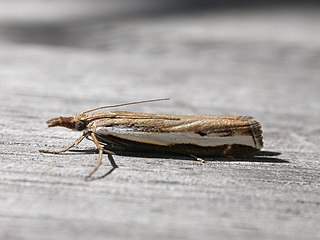
Orocrambus is a genus of moths of the family Crambidae. All species are endemic to New Zealand.

The Hunter Mountains of Lake Manapouri, New Zealand, were named by surveyor James McKerrow after the famous anatomist John Hunter. The Hunter Mountain Range covers an area between The South Arm and Hope Arm of Lake Manapouri South to the Green Lake.
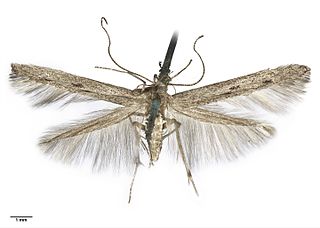
Batrachedra astricta is a species of moth in the family Batrachedridae. It is endemic to New Zealand. It is found in the north of the North Island and also Opoho in Otago. This species is on the wing in December. B. astricta has been found in wetland habitat. It has been shown to be associated with the threatened plant Sporadanthus ferrugineus.

Scoparia caesia is a moth of the family Crambidae. It is endemic to New Zealand.

Scoparia famularis is a species of moth in the family Crambidae. It is endemic to New Zealand.
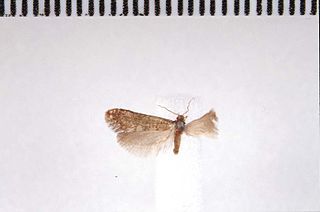
Grypotheca triangularis is a moth of the Psychidae family. It was first described by Alfred Philpott in 1930 under the name Talaeporia triangularis. In 1987 John S. Dugdale placed this species within the genus Grypotheca. It is endemic to New Zealand.

Orocrambus abditus is a moth of the family Crambidae. It was first described by Alfred Philpott in 1924. It is endemic to New Zealand and can be found in Marlborough, Arthur's Pass, and in Canterbury. The species inhabits grassland including tussock grassland and shrubland. Larvae have been collected in October and the adults of this species are on the wing from October to March.
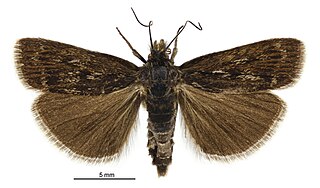
Orocrambus cultus is a moth in the family Crambidae. It was first described by Alfred Philpott in 1917 from specimens collected by Merlin Owen Pasco. It is endemic to New Zealand, where it is known from Cecil Peak.
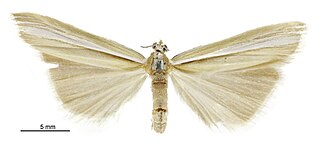
Orocrambus lectus is a moth in the family Crambidae. It was described by Alfred Philpott in 1929. It is endemic to New Zealand, where it has been recorded from Fiordland and north-western Nelson. The habitat of this species consists of subalpine and alpine areas. Adults have been recorded from December to February. Adults of this moth are known to pollinate Olearia virgata.

Orocrambus oppositus is a moth in the family Crambidae. It was described by Alfred Philpott in 1915. It is endemic to New Zealand, where it has been recorded in Fiordland. It is found in alpine grasslands.

Orocrambus ornatus is a moth in the family Crambidae. This species is endemic to New Zealand. It is classified as critically endangered by the Department of Conservation.

Orocrambus scoparioides is a moth in the family Crambidae. It was described by Alfred Philpott in 1914. It is endemic to New Zealand, where it has been recorded in the mountain ranges of Otago and Southland.
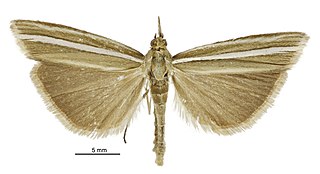
Orocrambus scutatus is a moth in the family Crambidae. It was described by Alfred Philpott in 1917. It is endemic to New Zealand, where it has been recorded in Southland. The habitat of this species consists of subalpine tussock grassland.
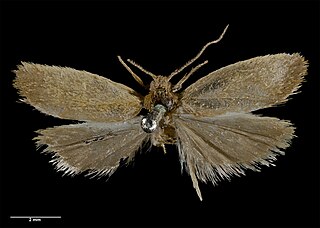
Pyrgotis humilis is a species of moth of the family Tortricidae. It is endemic to New Zealand. This species was first described by Alfred Philpott in 1930 from a specimen collected by C. E. Clarke on Mount Maungatua in Otago.

Asaphodes cataphracta is a moth in the family Geometridae. It is endemic to New Zealand and is found in the South Island. This species prefers grassy or tussock covered mountain side slopes as habitat. The adults of this species are on the wing from December until March. The larvae of A. cataphracta is known to consume native mountain buttercups (Ranunculaceae).

Astrogenes insignita is a species of moth in the family Tineidae. It was described by Alfred Philpott in 1930. This species is endemic to New Zealand.
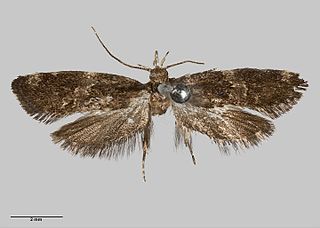
Trachypepla nimbosa is a species of moth in the family Oecophoridae. It is endemic to New Zealand. This species has been collected in Auckland as well as one specimen in the West Coast. Adults are on the wing in January however the West Coast specimen was collected in November. This species is classified as "Data Deficient" by the Department of Conservation.
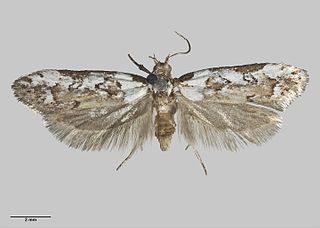
Trachypepla festiva is a moth of the family Oecophoridae and was first described by Alfred Philpott in 1930. It is endemic to New Zealand and has been collected in the northern parts of the North Island.
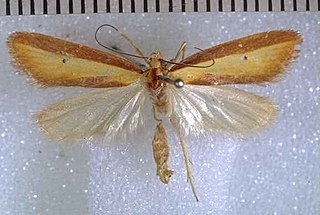
Proteodes clarkei is a species of moth in the family Depressariidae. It is endemic to New Zealand and has been collected in locations around Manapouri in alpine habitats. Both the male and female adults of the species are brightly coloured but the female is brachypterous, that is it has reduced wing size in comparison to the male. Adults have been recorded as being on the wing in January and February.

Pseudocoremia insignita, also referred to by the common name tree nettle flash, is a species of moth in the family Geometridae. It is endemic to New Zealand.




















